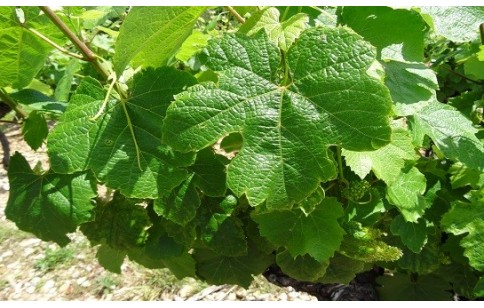- Code : #4991 S 50 mg
- Formula : C₁₆H₁₈O₉
- CAS : 327-97-9
Vitis vinifera
Vitis vinifera, “Common grape vine” in English and “Vigne” in French, belongs to the Vitaceae botanical family.
Native to central and southern Europe, Northern Africa, Western Asia and the Caucasus, it is a climbing shrub growing to 15 m.
The fruit is widely used, eaten raw or dried, and in making wine. Baked young leaves are used in cuisine, and seed yield an edible oil.
The fresh fruit is antilithic, constructive, cooling, diuretic and strengthening, also helpful in the treatment of varicose veins, haemorrhoids and capillary fragility. The leaves, especially red leaves, are anti-inflammatory and astringent, and used to treat leg venous insufficiency.
Vitis vinifera main constituants (all parts) are : several phenolic compounds (anthocyanins, hydroxycinnamic acids, proanthocyanidins, stilbenoids) ; linalool, geraniol, nerol, citronellol, homotrienol, monocyclic α-terpineol, also melatonin. Seeds are rich in unsaturated fatty acids.

- Code : #1027 S 20 mg
- Formula : C₂₁H₂₀O₁₂
- CAS : 482-36-0
- Code : #1243 S 10 mg
- Formula : C₂₁H₂₀O₁₁
- CAS : 480-10-4
- Code : #0911 S 10 mg
- Formula : C₂₃H₂₅O₁₂Cl
- CAS : 7228-78-6
- Code : #4758 10 mg
- Formula : C₁₆H₁₆O₃
- CAS : 537-42-8
- Code : #1327 S 20 mg
- Formula : C₂₁H₂₀O₁₂
- CAS : 482-35-9
- Code : #4963 S 20 mg
- Formula : C₁₄H₁₂O₃
- CAS : 501-36-0
- Code : #B9021 5 g









